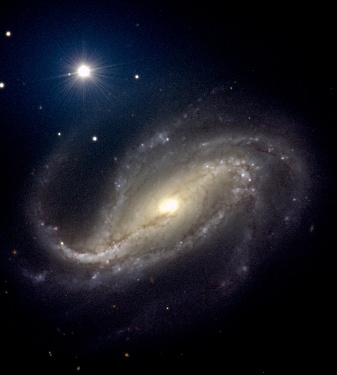 |
An Introduction to Astronomy: |
 |
An Introduction to Astronomy: |

"Stars and Galaxies" will begin on 16 September 2009: check
listings in the Continuing
Education web-site or brochure for enrolment information closer to
the date.
Ever wondered what lies beyond our own solar system? Through lectures and demonstrations this course considers the different types of stars and their lives from formation to stellar graveyard. We look at how the elements come together to form galaxies, how galaxies warp space-time with their gravity, and how the universe formed in the Big Bang. An evening of star viewing in the Blue Mountains is included.
| Lecture | Links | PDF version | Animations |
|---|---|---|---|
1. Introduction and review of basic conceptsWe set the scene, showing where we are in the universe, and introducing concepts and terminology will need, such as spectra, magnitudes, radiation. |
Links | SG1.pdf (6.2 Mb) | |
2. Characterising and classifying the starsWe show what the spectra of stars look like, and how they are classified into a meaningful sequence. |
Links | SG2.pdf (1.3 Mb) | |
3. The interstellar medium; and The SunWe look at the gas between the stars, the building blocks for everything else; and we look at our Sun, the nearest star. |
Links | SG3.pdf (4.8 Mb) | Granulation: gran_mov27M_99_crea.mpg
(472 kb) Original from http://www.windows.ucar.edu/tour/link=/sun/Solar_interior/Sun_layers/Convection_zone/convection_zone.html&edu=high Coronal loops: T171_13-21March2001_AR9373.mov (10.1 Mb) Original from http://science.nasa.gov/ssl/PAD/SOLAR/feature3.htm Coronal mass ejection: c3april.mpg (3.3 Mb) Original from http://sohowww.nascom.nasa.gov/ |
4. The evolution of the starsWe look at how stars evolve as they age, and why the changing internal structure of a star leads to massive changes in its outward appearance. Links |
SG4.pdf (3.6 Mb) |
Star formation: disk.mpg (3.8
Mb) |
Original from Chris Tinney's home page Cluster collapse simulation: cluster4.avi (30.3 Mb) Original from Matthew Bate's animations |
5. Stellar graveyards: white dwarfs, neutron stars and black holesWe look at the objects that are the ultimate fate of stars, and discuss how we find stars that are no longer shining. |
Links | SG5.pdf (2.4 Mb) | Pulsar model: pulsar.gif
(208 kb) Original from http://www3.amherst.edu/~gsgreenstein/progs/animations/pulsar_beacon/ Formation of a millisecond pulsar: millisecond.mov (9.2 Mb) Original from http://heasarc.gsfc.nasa.gov/docs/xte/Snazzy/Movies/millisecond.html Binary pulsar: PulsarsCurrent320x256.mpg (3.3 Mb), PulsarsEvolution320x256.mpg (5.1 Mb) Original from http://www.jodrellbank.manchester.ac.uk/news/2004/doublepulsar/ |
6. Binaries, clusters and variablesWe look at special types of stars, and how we can use them as yardsticks for the universe. |
Links | SG6.pdf (3.9 Mb) | Spectroscopic binary: spbin.mov (948 kb) Original from http://www-astronomy.mps.ohio-state.edu/~pogge/Ast162/Movies/ Eclipsing binary: eclipsing.gif (288 kb) Animation by HMJ Supernova: saul_sm.qt (5.8 Mb) Original from http://www-supernova.lbl.gov/public/figures/snvidea.html X-ray sources: bulge3.mov (1.8 Mb) Original from http://heasarc.gsfc.nasa.gov/docs/xte/learning_center/discover_0699.html Cepheid variables: pulsate.mpg (536 kb) Original from Pulsars in 47 Tuc: 47tucmovie.mpg (9.3 Mb) Original from http://www.jb.man.ac.uk/news/47Tuc/ Cluster simulation: n12kmovie.mpg (8.3 Mb) Original from http://staff.science.uva.nl/~spz/index.html |
7. Our galaxy: putting the pieces togetherWe look at how all these elements come together to make the Galaxy. |
|||
8. Galaxies: normal galaxies to quasars |
|||
9. Cosmology: the universe as a whole |
|||
10. Gravitational lensing |
There will be an evening of star-viewing at Mount Wilson on
| Saturday, 17th October |
We will have an extra viewing evening from the roof of the Physics building during the second half of the lecture on
| Wednesday, 30th September (lecture 3) |

Last updated 26 October 2009 Please let me know of any problems with these pages: H.Johnston@physics.usyd.edu.au